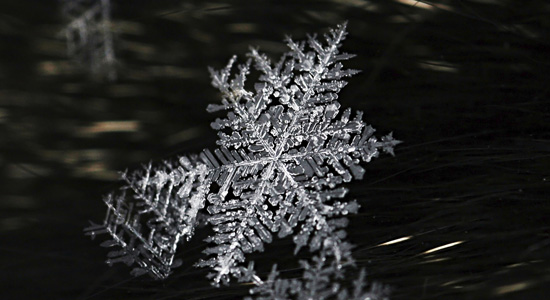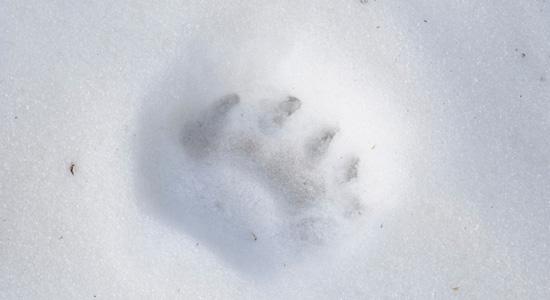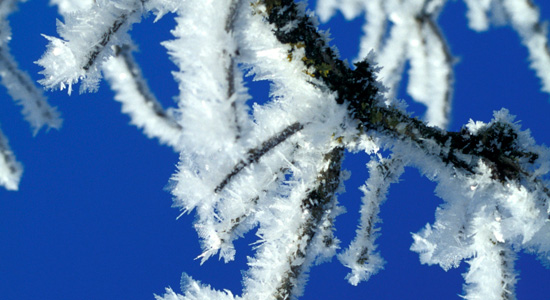3 Fun Wintertime Projects When It’s Cold Outside
When Old Man Winter bares his cold, sharp icicle fangs, don’t turn into an indoor flake. Bite back!
Here are three cold-weather projects to sink your teeth into during winter and walk away with a few cool souvenirs.

MAKE A SNOWFLAKE FOSSIL
 A tiny, one-of-a-kind snowflake lands on your coat sleeve. You look; you breathe; it’s gone. How can you make a flake stick around longer?
A tiny, one-of-a-kind snowflake lands on your coat sleeve. You look; you breathe; it’s gone. How can you make a flake stick around longer?
Try superglue. It can seep into small spaces, and trace amounts of water cause it to harden. Put these properties to work and make a lasting snow crystal “fossil.”
On a snowy day, pre-chill a tube of superglue (not the gel kind) and some glass slides and cover slips outside. Be sure to read the safety precautions on the glue’s label before you start.
Catch some snow on a dark surface. Find a crystal you like and move it to the middle of a glass slide. “Use a small paintbrush or a toothpick,” says snowflake expert Dr. Kenneth Libbrecht. “The crystals are delicate, and metal tweezers can conduct heat from your fingers.”
Cover the flake with a drop of superglue. Touching only its sides, gently place a cover slip over the glue. It can take as long as a week for the glue to completely set. Until then, protect the snow crystal by storing your slide in the freezer.
Later, view your snowflake “fossil” with or without a magnifying lens or microscope.

MAKE A PLASTER CAST OF ANIMAL TRACKS
 A blanket of snow covers the ground: It’s prime time for animal tracking. So why does your cast of that picture-perfect raccoon print look like it came from an eight-toed alien?
A blanket of snow covers the ground: It’s prime time for animal tracking. So why does your cast of that picture-perfect raccoon print look like it came from an eight-toed alien?
Don’t give up just yet. Making plaster casts of tracks in snow is tricky but not impossible.
Before you cast, reinforce the track so it can stand up to the weight of the plaster. If the snow is wet, dust it with some powdered plaster and let it set. If the snow is dry and powdery, spray a mist of water over the track and wait for it to freeze. You can also try using Snow Print Wax — crime-scene investigators use it to collect evidence.
Plaster gives off heat as it hardens. When casting in snow, mix the plaster to the thickness of half-melted ice cream, adding some snow to cool it down. Pour from a short distance to minimize damage to the track.
If the plaster freezes before it sets, turn the cast track-side up and bring it inside to thaw and finish setting.
New to tracking or just want to brush up? Check out these books:
- “Peterson Field Guide to Animal Tracks” by Olaus J. Murie and Mark Elbroch (Houghton Mifflin, $19.95 softcover)
- “Tom Brown’s Field Guide: Nature Observation and Tracking” by Tom Brown Jr. (Berkley Trade, $14 softcover)
- “Field Guide to Tracking Animals in Snow” by Louise R. Forrest (Stackpole Books, $16.95 softcover)
For younger readers:
- “Nature Detectives” by K.C. Kelley (A Boys’ Life DK Reader, DK Publishing, $3.99 softcover)

MAKE A HOARFROST SCULPTURE
 Feeling artistic? Team up with the cold and make some hoarfrost. These large, fragile ice crystals might look complex, but they are easy to grow.
Feeling artistic? Team up with the cold and make some hoarfrost. These large, fragile ice crystals might look complex, but they are easy to grow.
When temperatures are below freezing, set out an open pot of water. Put it somewhere that’s wind-free, such as in an unheated shed or barn. Keep the water warm with a hotplate or other heat source. Position a tree branch or other object for the hoarfrost crystals to grow on a few feet above the water. Now wait patiently for at least a day.
The air temperature and amount of water vapor coming from your pot will affect how the hoarfrost crystals grow. You might end up with crystals that look scaly, feathery or needle-like.
Want to hold on to your natural masterpiece in warmer weather? Take a picture!
I like it